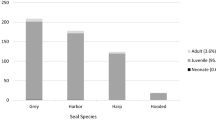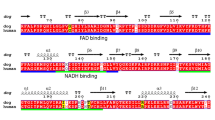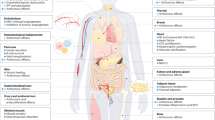Abstract
Geriatric and cancer-afflicted patients often experience decreased quality of life with cachexia, anemia, anorexia, and decreased activity level. We have studied the possibility that a myogenic plasmid that expresses growth hormone releasing hormone (GHRH) can prevent and/or treat these conditions. We administered plasmid to 17 geriatric and five cancer-afflicted companion dogs with an average age of 10.5±1.0 and 11.3±0.6 years at enrollment, respectively. Effects of the treatment were documented for at least 180 days post-treatment, with 10 animals followed for more than 1 year post-treatment, on average 444±40 days. Treated dogs showed increased IGF-I levels, and increases in scores for weight, activity level, exercise tolerance, and appetite. No adverse effects associated with the GHRH plasmid treatment were found. Most importantly, the overall assessment of the quality of life of the treated animals increased. Hematological parameters such as red blood cell count, hematocrit, and hemoglobin concentrations were improved and maintained within their normal ranges. We conclude that intramuscular injection of a GHRH-expressing plasmid is both safe and capable of improving the quality of life in animals for an extended period of time in the context of aging and disease. The observed anabolic and hematological responses to a single dose of this plasmid treatment may also be beneficial in geriatric patients or patients with cancer-associated anemia and/or cachexia.
This is a preview of subscription content, access via your institution
Access options
Subscribe to this journal
Receive 12 print issues and online access
$259.00 per year
only $21.58 per issue
Buy this article
- Purchase on SpringerLink
- Instant access to full article PDF
Prices may be subject to local taxes which are calculated during checkout

Similar content being viewed by others
References
Frederickson RM, Carter BJ, Pilaro AM . Nonclinical toxicology in support of licensure of gene therapies. Mol Ther. 2003;8:8–10.
Kotler DP . Cachexia. Ann Intern Med. 2000;133:622–634.
Colao A, Cuocolo A, Di Somma C, et al. Impaired cardiac performance in elderly patients with growth hormone deficiency. J Clin Endocrinol Metab. 1999;84:3950–3955.
Wang W, Iresjo BM, Karlsson L, Svanberg E . Provision of rhIGF-I/IGFBP-3 complex attenuated development of cancer cachexia in an experimental tumor model. Clin Nutr. 2000;19:127–132.
Pichard C, Kyle UG, Jolliet P, et al. Treatment of cachexia with recombinant growth hormone in a patient before lung transplantation: a case report. Crit Care Med. 1999;27:1639–1642.
Lieberman SA, Butterfield GE, Harrison D, Hoffman AR . Anabolic effects of recombinant insulin-like growth factor-I in cachectic patients with the acquired immunodeficiency syndrome. J Clin Endocrinol Metab. 1994;78:404–410.
Molon-Noblot S, Laroque P, Prahalada S, et al. Effect of chronic growth hormone administration on skeletal muscle in dogs. Toxicol Pathol. 1998;26:207–212.
Angelopoulos TJ, Seip RL, Cole TG . Effect of short-term recombinant growth hormone administration on plasma lipoproteins in elderly adults. Gerontology. 1998;44:228–231.
Satozawa N, Takezawa K, Miwa T, Takahashi S, Hayakawa M, Ooka H . Differences in the effects of 20 K- and 22 K-hGH on water retention in rats. Growth Horm IGF Res. 2000;10:187–192.
Takahashi S, Satozawa N . The 20-kD human growth hormone reduces body fat by increasing lipolysis and decreasing lipoprotein lipase activity. Horm Res. 2002; 58:157–164.
Draghia-Akli R, Cummings KK, Khan AS, Brown PA, Carpenter RH . Effects of plasmid-mediated growth hormone releasing hormone supplementation in young healthy Beagle dogs. J Anim Sci. 2003;81:2301–2310.
Draghia-Akli R, Hahn KA, King GK, Cummings K, Carpenter RH . Effects of plasmid mediated growth hormone releasing hormone in severely debilitated dogs with cancer. Mol Ther. 2002;6:830–836.
Li X, Eastman EM, Schwartz RJ, Draghia-Akli R . Synthetic muscle promoters: activities exceeding naturally occurring regulatory sequences. Nat Biotechnol. 1999;17:241–245.
Draghia-Akli R, Fiorotto ML, Hill LA, Malone PB, Deaver DR, Schwartz RJ . Myogenic expression of an injectable protease-resistant growth hormone-releasing hormone augments long-term growth in pigs. Nat Biotechnol. 1999; 17:1179–1183.
Morrison W . Clinical evaluation of cancer patients. In: Morrison W, ed. Cancer in Dogs and Cats: Medical and Surgical Management, Vol. 7. West Lafayette, IN: Teton New Media; 2002: 57–65.
Draghia-Akli R, Khan AS, Cummings KK, et al. Electrical enhancement of formulated plasmid delivery in animals. Technol Cancer Res Treat. 2002;1:365–371.
Muul LM, Tuschong LM, Soenen SL, et al. Persistence and expression of the adenosine deaminase gene for 12 years and immune reaction to gene transfer components: long-term results of the first clinical gene therapy trial. Blood. 2003;101:2563–2569.
High K . AAV-mediated gene transfer for hemophilia. Genet Med. 2002;4:56S–61S.
Fewell JG, MacLaughlin F, Mehta V, et al. Gene therapy for the treatment of hemophilia B using PINC-formulated plasmid delivered to muscle with electroporation. Mol Ther. 2001;3:574–583.
Horiuchi A, Nikaido T, Mitsushita J, Toki T, Konishi I, Fujii S . Enhancement of antitumor effect of bleomycin by low-voltage in vivo electroporation: a study of human uterine leiomyosarcomas in nude mice. Int J Cancer. 2000;88:640–644.
Imai E, Isaka Y . Gene electrotransfer: potential for gene therapy of renal diseases. Kidney Int. 2002;61 (Suppl 1):37–41.
Xue F, Takahara T, Yata Y, et al. Attenuated acute liver injury in mice by naked hepatocyte growth factor gene transfer into skeletal muscle with electroporation. Gut. 2002;50:558–562.
Puche RC, Alloatti R, Chapo G . Growth and development of male “little” mice assessed with Parks' theory of feeding and growth. Growth Dev Aging. 2002;66:71–78.
Schambelan M, Mulligan K, Grunfeld C, et al. Recombinant human growth hormone in patients with HIV-associated wasting. A randomized, placebo-controlled trial. Serostim Study Group. Ann Intern Med. 1996;125:873–882.
Pan LC, Carpino PA, Lefker BA, et al. Preclinical pharmacology of CP-424,391, an orally active pyrazolinone-piperidine [correction of pyrazolidinone-piperidine] growth hormone secretagogue. Endocrine. 2001;14:121–132.
Prahalada S, Stabinski LG, Chen HY, et al. Pharmacological and toxicological effects of chronic porcine growth hormone administration in dogs. Toxicol Pathol. 1998;26:185–200.
Jeffcoate W . Growth hormone therapy and its relationship to insulin resistance, glucose intolerance and diabetes mellitus: a review of recent evidence. Drug Saf. 2002; 25:199–212.
Ten Have SM, van der Lely AJ, Lamberts SW . Increase in haemoglobin concentrations in growth hormone deficient adults during human recombinant growth hormone replacement therapy. Clin Endocrinol (Oxf). 1997;47:565–570.
Sivan B, Lilos P, Laron Z . Effects of insulin-like growth factor-I deficiency and replacement therapy on the hematopoietic system in patients with Laron syndrome (primary growth hormone insensitivity). J Pediatr Endocrinol Metab. 2003;16:509–520.
Kotzmann H, Riedl M, Clodi M, et al. The influence of growth hormone substitution therapy on erythroid and myeloid progenitor cells and on peripheral blood cells in adult patients with growth hormone deficiency. Eur J Clin Invest. 1996;26:1175–1181.
Acknowledgements
We thank all of the dog owners and the dogs for their cooperation and participation in this study. We thank our clinical staff at all the participating veterinary clinics for their excellent patient care. We thank Dr Lou Smith, Dr Amir Khan, and Dr Jeffrey Nordstrom for their critical correction of this manuscript. We acknowledge support for this study from ADViSYS, Inc. (The Woodlands, Texas).
Author information
Authors and Affiliations
Corresponding author
Rights and permissions
About this article
Cite this article
Tone, C., Cardoza, D., Carpenter, R. et al. Long-term effects of plasmid-mediated growth hormone releasing hormone in dogs. Cancer Gene Ther 11, 389–396 (2004). https://doi.org/10.1038/sj.cgt.7700717
Received:
Published:
Issue date:
DOI: https://doi.org/10.1038/sj.cgt.7700717
Keywords
This article is cited by
-
A Comparison of the Growth Responses Following Intramuscular GHRH Plasmid Administration Versus Daily Growth Hormone Injections in Young Pigs
Molecular Therapy (2010)
-
Gene therapy by electroporation for the treatment of chronic renal failure in companion animals
BMC Biotechnology (2009)
-
Double-blinded, Placebo-controlled Plasmid GHRH Trial for Cancer-associated Anemia in Dogs
Molecular Therapy (2008)



